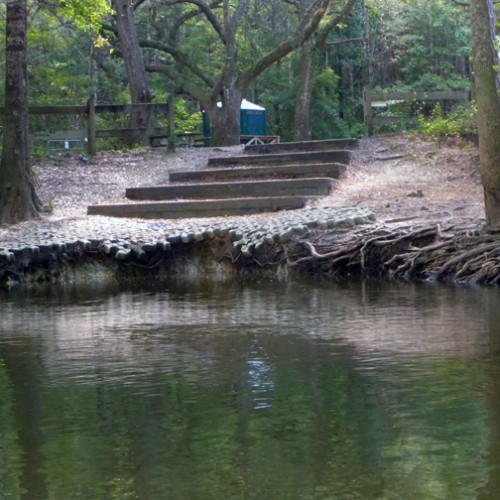
Holmes Creek, Econfina Creek, Wakulla Springs, and Jackson Blue spring to receive restoration funding
On Sept. 10 2014, the Florida Joint Legislative Budget Commission approved the Florida Department of Environmental Protection’s proposed $69 million in springs projects leveraged by the $30 million Governor Scott secured in the “It’s Your Money Tax Cut Budget.” This approval brings the total investment in springs projects to more than $100 million in the last two years.
The project plan is a collaborative effort with the department, water management districts, community leaders and local stakeholders. The contributions and cooperation of these agencies and individuals have been crucial throughout the development process. Combining efforts and resources from various agencies across Florida allows for more efficient and comprehensive water restoration.

The objective of the project plan is to effectively address water quality and water quantity by supporting both urban and agricultural projects across geographic regions of the state where springs occur in the natural landscape. The projects were selected based on pollutant reduction, water quantity conservation, cost effectiveness and available matching grant funding.
A total of 27 projects will benefit springs and spring systems. The Northwest Florida Water Management District will receive $15,917,210 to implement eight projects designed to improve conditions in Wakulla Springs and Jackson Blue Spring, as well as springs associated with the Holmes Creek and Econfina Creek systems.
The details of the Northwest Florida projects are as follows:
Holmes Creek:
The Holmes Creek Springs Complex Restoration project will stabilize the streambank and provide stormwater treatment and appropriate riparian access at Cotton Landing, a recreation site along Holmes Creek. The project will prevent erosion and sediment runoff into the creek and help protect this unique karst system.
Econfina Creek:
Devil’s Hole Spring is a second magnitude spring, located on Econfina Creek, with a discharge of approximately 21 million gallons per day. This spring is a popular public recreation area that is experiencing significant erosion and de-stabilization. The Devil’s Hole Spring Restoration project will stabilize, restore, and protect streambanks at the spring, which will improve water quality, restore historical shoreline impacted by erosion, and prevent destruction of habitat resulting from erosion and recreational use on Econfina Creek. In addition to the shoreline restoration, boardwalks and access points will be installed to prevent future water quality and habitat impacts.
Wakulla Springs:
DEP and the District will invest more than $5.5 million to implement four wastewater improvement projects that will significantly improve the quality of water entering Wakulla Springs by reducing nutrients. The District will partner with Leon County for two of the projects (Lake Munson Target Area and Lake Bradford Mobile Home Park wastewater improvement projects) to connect a combined 160 single family septic units to the City of Tallahassee’s sewer system, providing a 95 percent reduction in nitrogen loading. The County will provide 50 percent matching funding on both projects—leveraging an additional $1 million in springs protection.
The District will also partner with Wakulla County to implement two projects (Wakulla Gardens and Magnolia Gardens Wastewater Improvement projects), which together will connect 270 single family septic units to the County’s sewer system and provide a 93 percent reduction in nitrogen loading. The County will provide 63 percent matching funding on both projects, for a total of approximately $7.7 million.
Jackson Blue Spring
The proposed plan includes nearly $1 million to implement two projects to improve water quality and increase the water quantity available to Jackson Blue Spring. More than $487,000 will be used to build upon the success of the District’s Jackson Blue Spring Agricultural Best Management Practices (BMP) grant program. This grant program will provide cost-share funding to agricultural producers for irrigation system improvements and equipment and tools to reduce fertilizer and pesticide use and improve water use efficiency—protecting both water supply and quality. Agricultural partners provide 25 percent in matching funding for this program.
The District will also initiate a project to investigate the Claiborne Aquifer as an alternative water source to the Floridan Aquifer for crop irrigation to offset water use demands, which would make additional water available to the springs.
